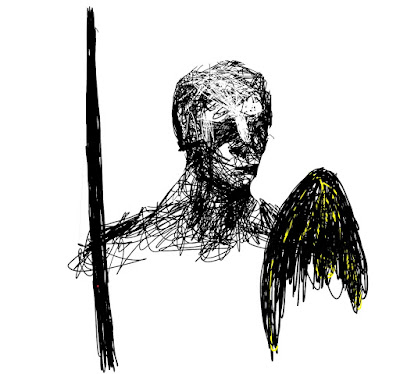Differences between depression and burnout (part 1 of 3)
Jill Lepore's far-ranging New Yorker article, “Burnout: Human Affliction or Human Condition” (published 17 May 2021) was able to trace back a burnout-like affliction to the Iliad. At least under Robert Fagles's pen, translating in 1990, Achilles (book I, line 343) said that if he were to obey Agamemnon, he would be called a “burnt-out coward.” Lepore acknowledged this may be a modern mouth speaking for an ancient warrior.
But what about Helen, who says (book 6, line 409)
that first day my mother brought me into the light
some black whirlwind had rushed me out to the mountains
or into the surf where the roaring breakers and drag
and the waves had swept me off before all this had happened!
Is that still burnout, or are we now closer to what we moderns call depression? Her desire never to have been born reminds me of Hamlet (Act I, scene 2, line 129).
Thaw, and resolve itself into a dew!
Or that the Everlasting had not fixed
His canon 'gainst self-slaughter! Oh God!
And when we turn Lepore's Old Testament references to burnout (Numbers 11:14, King James Version) then it is Moses who said “I am not able to bear all this people alone, because it is too heavy for me” or Elijah (1 Kings 19), when he “went a day’s journey into the wilderness, and came and sat down under a juniper tree: and he requested for himself that he might die; and said, It is enough.”
Can there be a difference between the feelings beneath “he requested for himself that he might die” and “how I wish . . . the waves had swept me off” and the feelings of being a “burnt-out coward” or “It is too heavy for me”? In the first two, the speaker, like the Sibyl (herself described in Petronius’s Satyricon) appearing in the epigraph of The Waste Land, asks to be dead; while in the other, the speaker tells of too much weight to bear, and of cowardice. Where precisely is the difference?
At the Exploratorium in San Francisco is an exhibit called Gray Step, in which a rope hangs between two rectangles, each gray. Even looking at them carefully you perceive they are the same color. But lift the rope, and you can see there is an edge marking a boundary between both, and when you read the accompanying text, you learn that not only is there a gradation between each rectangle from light gray to a slightly less light gray, but even more surprising, the two rectangles are identical.
If we were to put what we moderns call burnout and depression in rectangles, side by side, and lift the rope between, would we see an edge? And if there were an edge, would the rectangles be different?



Comments
Post a Comment